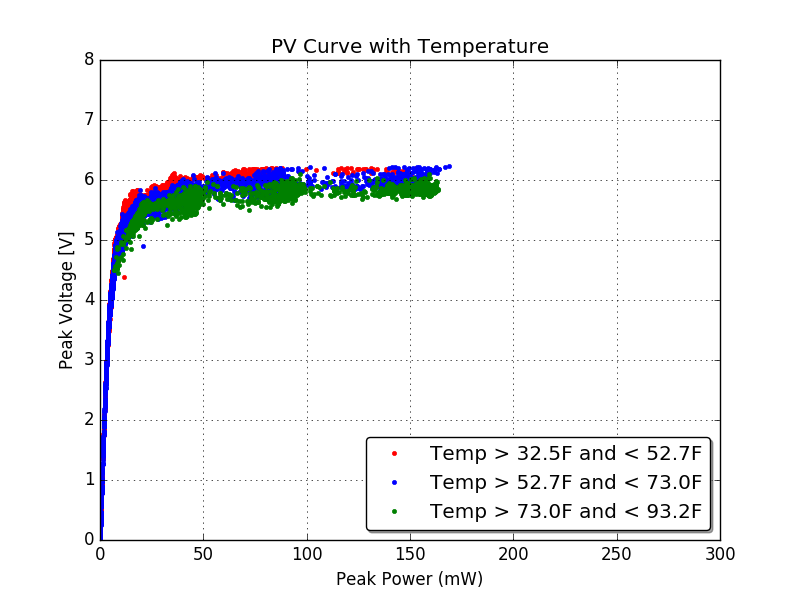With the polar vortex effecting much of northern North America this past winter, there was some "discussion" among politicians about how solar power would operate in the cold temperatures. Undeniably cold can negatively effect batteries, snow cover on panels can block sunlight, and shorter days (and incidence angle changes, depending on if the panels are on trackers and which direction they face) reduce the total amount of solar energy available. However, solar panels actually perform at a higher efficiency when cold.
Let's look at the data. SOL has been operating in my windowsill for another month. There are still some issues with missing data and timing drift to resolve, but the measurements themselves seem to be quite reliable and repeatable. My apartment is astonishingly poorly insulated, so a fairly wide variety of temperatures on the PCB of SOL are recorded. A quick look at the plots in this paper show that at a given power generation point, a colder cell will have a higher open circuit voltage.
The point of SOL, of course, is to determine how much power is available from sunlight. So, unlike that paper, power is not a known input. We only know, at a given point in time, the internal temperature of SOL, the open circuit panel voltage, the short circuit current, and the power at the maximum power point. Because SOL is in my windowsill, its temperature changes with the outside temperature and the amount of sunlight hitting it. In the plot below, we see a separation of open circuit peak panel voltage based on temperature. As in the paper above, with generated power held constant, the peak voltage is higher for lower temperatures.

Further, it seems likely that there is a link between temperature and sunlight hitting SOL, especially since SOL is inside and my apartment is not 93 degrees F. The fact that SOL measures peak overall power at low temperatures similar to peak overall power at high temperatures may imply that it is more efficiently converting sunlight to electrical power at low temperatures.
Thankfully, for the goal of SOL, which is to determine how much power a large solar installation could produce, the effect of temperature can be assumed the same on SOL and a larger installations, so that we do not need to know the effects of temperature of SOL's efficiency to make these predictions.
Discussions
Become a Hackaday.io Member
Create an account to leave a comment. Already have an account? Log In.